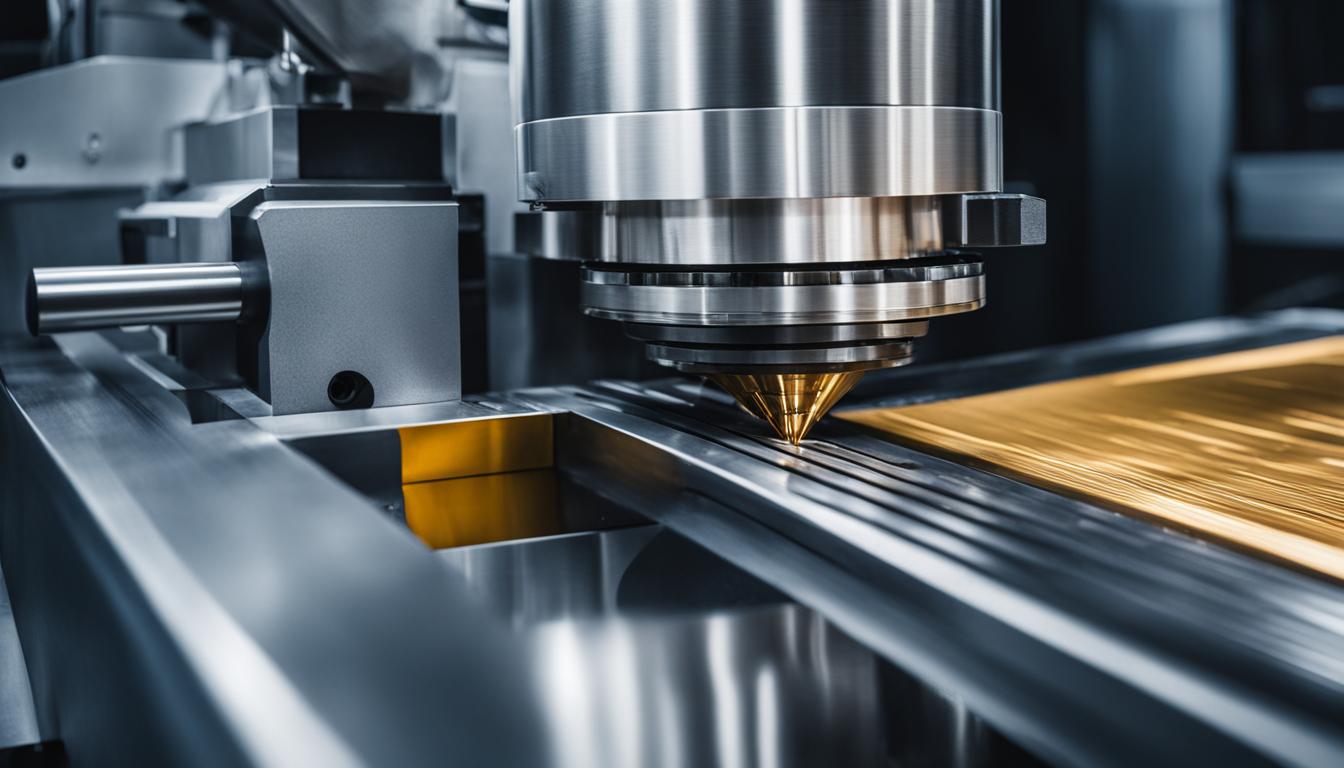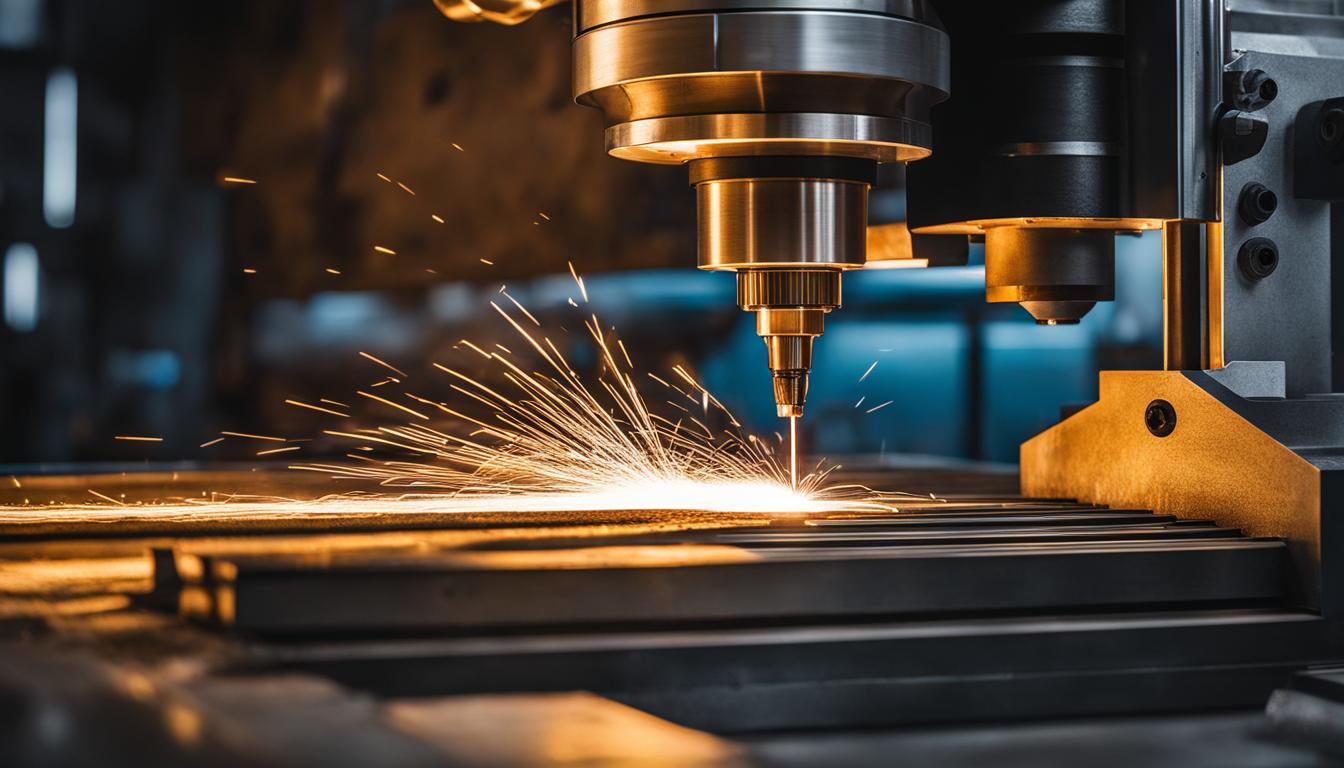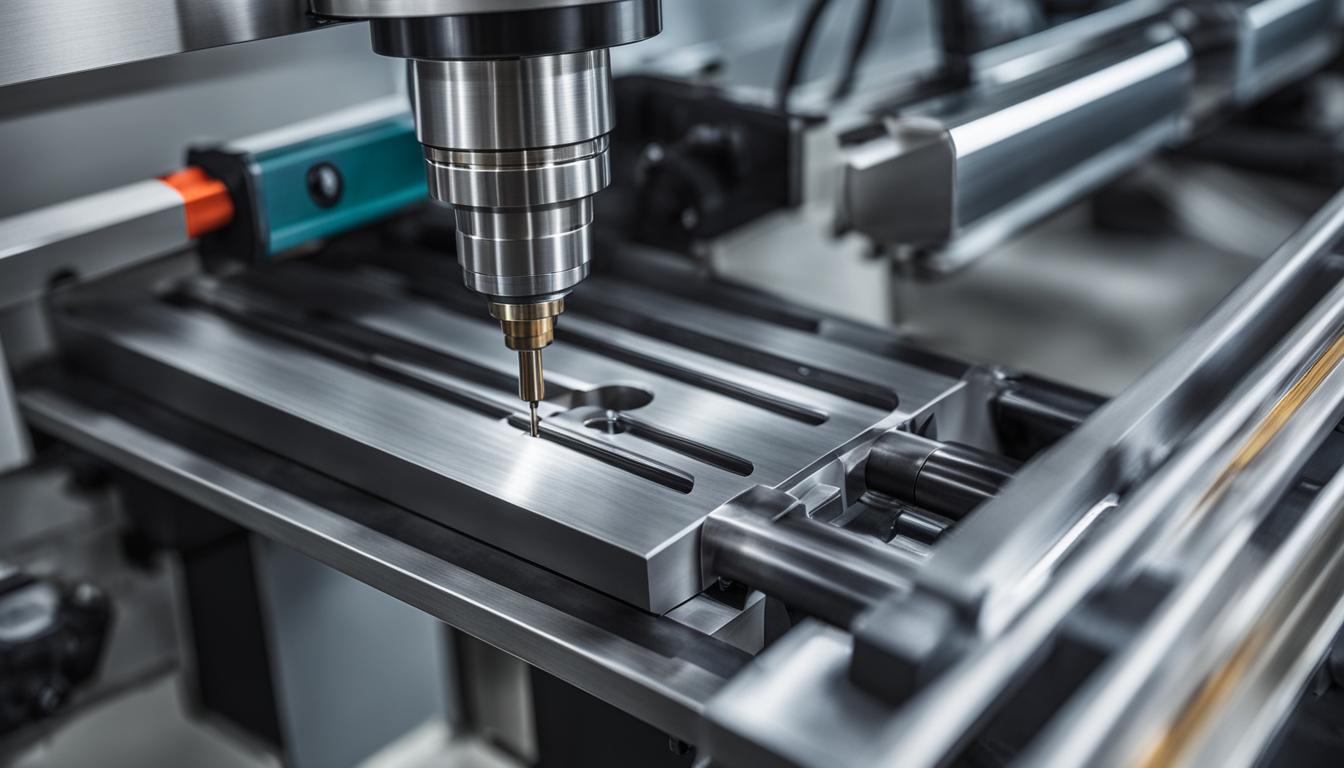CNC milling machines come in several types, each designed for specific applications and manufacturing needs. The main categories include vertical milling machines, horizontal milling machines, and multi-axis milling machines. Vertical milling machines have a spindle that moves vertically, making them ideal for face milling, drilling, and creating slots. Horizontal milling machines feature a horizontally oriented spindle, which is particularly effective for heavy-duty cutting and working on large workpieces. Multi-axis milling machines, including 5-axis and 6-axis variants, offer enhanced flexibility and precision, allowing for complex geometries and reduced setup time.
Other specialized types include bed mills, which have a stationary spindle and a moving table, and gantry mills, which are designed for large-scale machining operations. Each type of CNC milling machine offers unique advantages in terms of accuracy, speed, and versatility, catering to diverse manufacturing requirements across industries such as aerospace, automotive, and medical device production.
- There are different types and variations of CNC milling machines.
- Understanding the types of CNC milling machines can help in choosing the right one for specific machining projects.
- CNC milling machines offer a wide range of options, techniques, and processes.
- By exploring the various categories, one can utilize CNC milling machines effectively.
- Choosing the right type of CNC milling machine can significantly impact the quality and efficiency of machining projects.
What is CNC Machining?
CNC machining is a revolutionary manufacturing method that utilizes computer-controlled machine tools to produce precision parts and products. This advanced technology has transformed the manufacturing industry by offering faster, more efficient, and highly accurate machining processes.
At its core, CNC machining involves the use of computer-controlled machines to perform various machining operations such as cutting, milling, drilling, and shaping. These machines are equipped with a range of cutting tools and are guided by digital instructions.
The CNC machine operates based on a design file created using Computer-Aided Design (CAD) software. The design file contains detailed information about the desired part, including its dimensions, geometry, and specific machining instructions. This digital design file is then translated into machine-readable code, known as G-code, by Computer-Aided Manufacturing (CAM) software.
The G-code serves as a set of instructions that guide the CNC machine throughout the machining process. It contains precise commands for the machine’s movements, tool changes, speed, and feed rates. By following the G-code instructions, the CNC machine can execute complex machining operations with exceptional accuracy.
The CNC machining process is fully automated, allowing for increased productivity and reduced human error. The machine’s computer-controlled systems ensure consistent and repeatable results, eliminating variations that can occur with manual machining methods.
The CNC machine itself consists of several key components that work together to execute the machining tasks. These components include:
- Drive/motion system: Responsible for the movement and positioning of the machine’s axes.
- Feedback system: Provides real-time feedback on the machine’s position and performance.
- Command function: Executes the G-code instructions and controls the machine’s operations.
By harnessing the power of computer-controlled machine tools, CNC machining offers numerous advantages in terms of precision, speed, and efficiency. It has become an integral part of various industries, including automotive, aerospace, electronics, and manufacturing.
In the next section, we will delve deeper into the fundamental elements of a CNC machine system and explore how each component contributes to the overall functionality and performance of the machine.
Basic Elements of CNC Machine System
A CNC machine system is composed of several essential elements that enable its operation. These elements include information input/output devices, internet connectivity options, external mechanical shaft control units, feed servo drive and motor units, spindle motor and drive units, CNC control units, PMC controllers, feedback and position measurement units, input and output units, and a power cabinet.
Information input/output devices such as disk drives and keyboards allow operators to input instructions and receive feedback from the CNC machine. These devices provide a user-friendly interface for programming and control.
Internet connection capabilities enable remote monitoring and control of the CNC machine system. This allows operators to access and manage the machine’s performance and operation from anywhere with an internet connection.
The external mechanical shaft control unit facilitates tool exchange and ensures precise positioning and alignment of cutting tools. This unit plays a crucial role in achieving accurate machining results.
The feed servo drive and motor unit control the movement of the machine’s axes, ensuring precise and consistent motion. This unit is responsible for the smooth and accurate positioning of the cutting tool.
The spindle motor and drive unit provide the necessary power and torque to rotate the cutting tool. This unit enables the machine to perform various cutting operations effectively.
The CNC control unit is responsible for numerical control, executing the programmed instructions, and coordinating the machine’s different components. It ensures the accurate implementation of machining tasks.
The PMC controller handles the machine control functions, including sequence control, scheduling, and coordination between different parts of the system. It plays a vital role in managing the overall operation of the CNC machine.
The feedback and position measurement unit provides real-time feedback on the machine’s position and performance. This unit ensures accuracy and enables the machine to make necessary adjustments during the machining process.
The input and output unit manages the control signals between different components of the CNC machine system. It facilitates communication and coordination between various elements, ensuring smooth operation.
The power cabinet houses the electrical and electronic components of the CNC machine system. It provides the necessary power supply and ensures the safe and reliable operation of the machine.
Different Types of CNC Machines
There are different types of CNC machines available for various machining operations. Some of the most common types include:
- Milling Machines
- Lathe Machines
- Drilling Machines
- Grinding Machines
- Laser Cutting Machines
- Plasma Cutting Machines
- Waterjet Cutting Machines
- EDM Machines
- Router Machines
- Multi-Axis Machines
- 3D Printers
- Automatic Tool Changers
Each type has its own unique capabilities and applications in different industries.
Types of CNC Machines by Number of Coordinate Axes
CNC machines can be categorized based on the number of coordinate axes they can move along. These axes determine the machine’s ability to maneuver and manipulate the workpiece during machining operations.
2-Axis Machines
2-axis machines can move in two directions, typically the X and Y axes. They offer linear movement and are commonly used for basic milling and engraving tasks. While limited in their movement capabilities, 2-axis machines are ideal for simpler projects that require minimal complexity and precision.
3-Axis Machines
3-axis machines can move along three axes – the X, Y, and Z axes. This added axis of movement allows for greater versatility and precision in machining operations. With 3-axis machines, you can create more complex and detailed parts, making them suitable for a wide range of applications across various industries.
4-Axis Machines
4-axis machines, as the name suggests, add an additional axis of rotation to the X, Y, and Z axes. This fourth axis, typically referred to as the A-axis, enables the machine to rotate the workpiece or the cutting tool. By incorporating rotational movement, 4-axis machines offer enhanced capabilities for machining operations that require more intricate geometries and complex contours.
Higher-axis machines, such as 5-axis and multi-axis machines, further increase the number of axes for even more precise and intricate machining operations. These advanced machines are used in industries such as aerospace, automotive, and medical, where complex parts and tight tolerances are critical.
Types of CNC Machines According to the Control System
CNC machines can be classified based on the control system they utilize. One common control system for CNC milling machines is CAD/CAM software. This software plays a crucial role in program setup and tool selection, allowing operators to efficiently design and execute machining tasks. CAD/CAM software simplifies the programming process and enhances precision, resulting in high-quality finished products.
In addition to CAD/CAM software, some CNC milling machines also feature a spindle coolant system. This system serves the dual function of cooling and lubricating the cutting tools during the machining process. By maintaining optimal temperatures and reducing friction, the spindle coolant system ensures the accuracy, longevity, and efficiency of the machining operation.
| CNC Milling Machine Control Systems | Advantages |
|---|---|
| CAD/CAM Software |
|
| Spindle Coolant System |
|
CNC Milling Machines: Horizontal vs. Vertical
CNC milling machines are available in two main configurations: horizontal and vertical. Each type offers distinct advantages and is suitable for different machining requirements and workpiece characteristics.
Horizontal Milling Machines:
Horizontal milling machines are known for their versatility and are especially suitable for machining long or heavy workpieces. With a horizontally positioned spindle, these machines can perform operations at various angles, providing greater flexibility in machining processes. Horizontal milling machines are commonly used in industries such as automotive, aerospace, and heavy machinery.
Vertical Milling Machines:
Vertical milling machines have a vertically moving spindle, and the workpiece is typically moved up and down during the machining process. These machines are often chosen for their ability to produce intricate details and precise cuts. Vertical milling machines are commonly used in industries such as electronics, jewelry making, and prototyping.
The choice between horizontal and vertical milling machines depends on factors such as the specific machining requirements, the size and shape of the workpiece, and the desired precision. Both types of machines have their unique benefits and applications, and selecting the right one can greatly enhance the efficiency and accuracy of the machining process.

| Category | Horizontal Milling Machines | Vertical Milling Machines |
|---|---|---|
| Spindle Orientation | Horizontal | Vertical |
| Workpiece Movement | Stationary, spindle performs operations at various angles | Moved up and down, spindle stays in a fixed position |
| Applications | Versatile, suitable for long or heavy workpieces | Ideal for intricate details and precise cuts |
| Industries | Automotive, aerospace, heavy machinery | Electronics, jewelry making, prototyping |
CNC Milling Machines: 5-Axis Machining
When it comes to complex machining operations that require intricate shapes and angles, 5-axis CNC milling machines are the go-to solution. These machines offer a higher degree of precision and flexibility compared to their 2 or 3-axis counterparts. With two additional axes of movement, 5-axis machines enable the milling cutter to access more parts of the workpiece, resulting in highly precise results.
Whether you’re working on aerospace components, medical devices, or automotive parts, 5-axis milling machines can handle a wide range of applications with ease. Their advanced capabilities allow for the creation of complex geometries and contours, eliminating the need for multiple setups and reducing production time.
However, it’s important to note that operating 5-axis CNC milling machines requires advanced expertise and knowledge. The additional axes of movement introduce complexity to the machining process, necessitating skilled operators who can effectively program and control the machine to achieve optimal results.
With their ability to tackle complex machining operations and deliver precise outcomes, 5-axis CNC milling machines are an invaluable asset for industries that demand high-quality and intricate components. These machines open up new possibilities for design and manufacturing, pushing the boundaries of what is achievable in the world of CNC machining.
| Advantages of 5-Axis Machining | Challenges of 5-Axis Machining |
|---|---|
|
|
CNC Milling Machines: 3D Printing
CNC milling machines have evolved to incorporate 3D printing capabilities, allowing for a unique combination of traditional machining and additive manufacturing. 3D printers utilize a digital file to create 3D solid objects by adding layers of material, one on top of the other until the final product is formed. This additive manufacturing process offers several advantages, particularly in the creation of customized and intricate parts.
Unlike traditional machining methods, 3D printing does not require the removal of material from a solid block. Instead, it builds up the object layer by layer, enabling the production of complex geometries that are otherwise difficult to achieve. This makes 3D printing a valuable tool in various industries, such as aerospace, automotive, and healthcare.

By incorporating 3D printing capabilities into CNC milling machines, manufacturers can leverage the benefits of both technologies. CNC milling provides the precision and accuracy necessary for machining operations, while 3D printing offers the ability to create intricate features and structures that would be challenging or even impossible to produce solely through traditional milling methods.
However, it’s important to note that 3D printing has some limitations. The cost of 3D printing materials and equipment can be higher compared to traditional machining processes, making it less suitable for certain applications, especially those involving mass production. Additionally, 3D printing can be slower than traditional machining methods, as it builds objects layer by layer. Despite these limitations, the unique capabilities of 3D printing make it a valuable tool for rapid prototyping, customization, and the production of highly complex parts.
| Advantages of CNC Milling Machines with 3D Printing | Limitations of CNC Milling Machines with 3D Printing |
|---|---|
|
|
CNC Milling Machines: Automatic Tool Changer
One of the key features of certain CNC milling machines is the automatic tool changer (ATC). This innovative technology allows for the seamless swapping of cutting tools during machining operations, enhancing production speed and reducing lead time. With the ATC, there is no longer a need for manual tool changes, saving valuable time and increasing overall efficiency.
The automatic tool changer is particularly beneficial in scenarios where multiple tools are required for a single machining process. Instead of stopping the machine and manually replacing tools, the ATC can swiftly replace a broken or worn-out tool or even switch out an incorrect tool for the correct one. This uninterrupted tool replacement process ensures smooth and reliable machining operations.
By incorporating an automatic tool changer into CNC milling machines, manufacturers can optimize their production processes and maximize productivity. The ability to quickly and seamlessly switch between tools not only saves time but also ensures consistent and accurate results. With improved production speed and reduced lead time, businesses can meet deadlines and deliver high-quality products to their customers efficiently.
